FOTOLIMO 2021
Exhibition opening hours
Monday to Friday:
- Portbou: 16h to 20h
- Cerbère and old customs post: 14h to 18h
Weekend:
- Portbou: 10h to 14h and 16h to 20h
- Cerbère: 10h to 13h and 14h to 18h
- Old customs post: 10h to 18h
Exhibitions and activities
Belvédère Hotel (Cerbère)
Opening of the festival
+ Sanne de Wilde’s talk
+ projection of Bering Strait
+ cocktail
Friday 17, 19:00

SANNE DE WILDE – THE ISLAND OF THE COLORBLIND
When Sanne de Wilde visited the island of Pingelap, where an unusually high number of inhabitants are color blind, she immediately became part of the family. Along the way, she discovered that being color blind can open up a whole new perspective on how we interact with each other and the ways we are influenced by words and colors. In this talk, Sanne explores the ways color blindness can lead to us seeing more, creating a unified and wholesome community.
BERING STRAIT – LOURDES GROBET
At the heart of a landscape dominated by cyberspace, the colonization of America through the massive migration of human groups from Asia seems to be the starting point of an ideological debate. However, not only is it possible today to have archaeological evidence that weakens this hypothesis, but it also forces us to deconstruct the conceptual limits of the idea of ”colonization”. Although “colonization” can refer exclusively to structures of political domination, it is also important to understand it as a dynamic of reformulation of social spaces through migration and the interaction of different human groups.
Portbou graveyard and Belvédère Hotel (Cerbère)
Sowers of the future
Poetic performance and screening
Saturday 18, 7:00 (sunrise) – Performance (Portbou graveyard)
Saturday 18, 15:30 – Performance (Portbou graveyard)
Sunday 19, 11:30 – Screening (Bélvèdere Hotel)
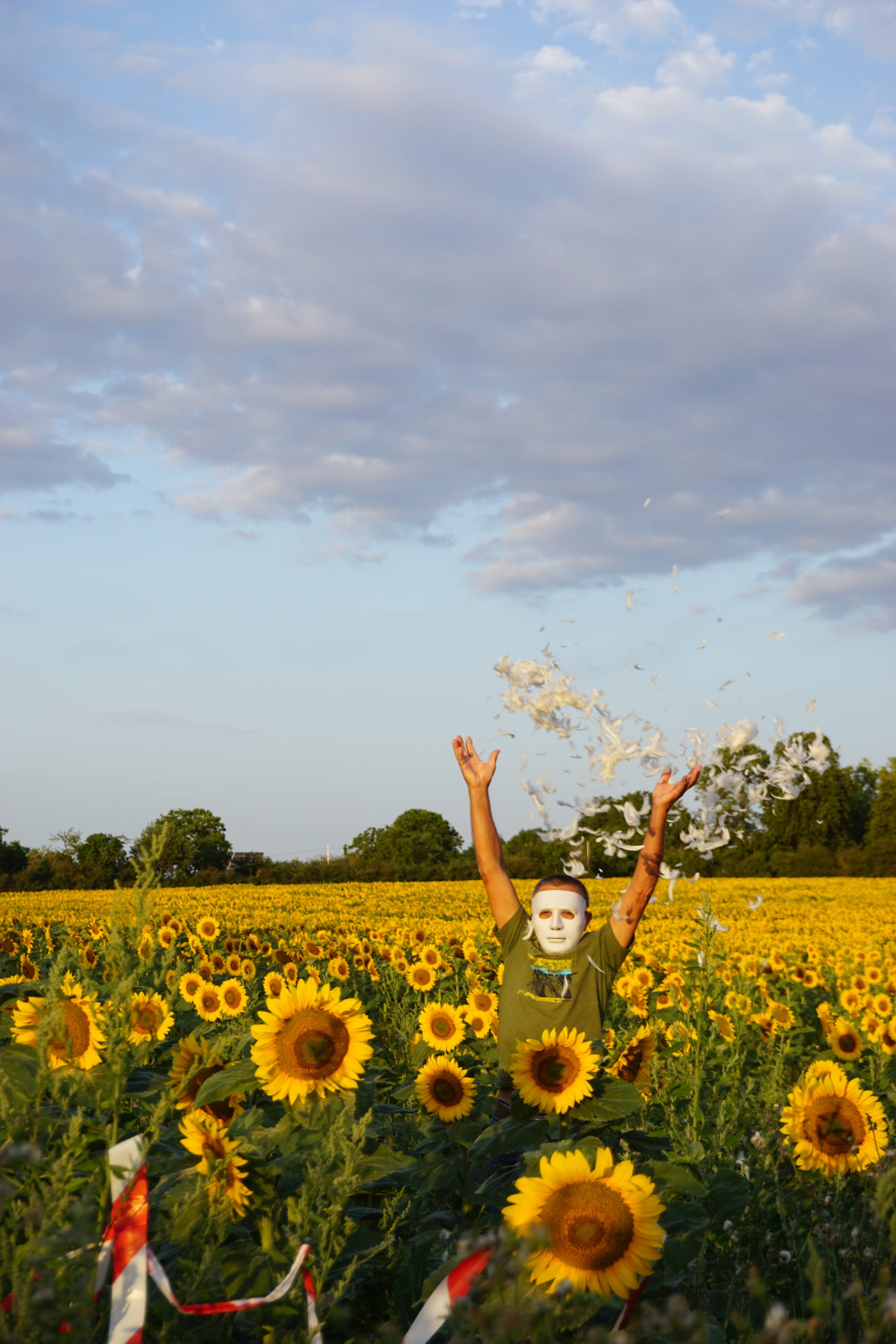
The origin of this project is based on the images we are presented with about refugees. Images that are both violent and terribly deadly.
What I propose is a way of looking through a singular prism and, in the specific case of this project, to give an account of a desire for the future that underlies the desire to live. Images that go beyond the sole question of refugees, but that concern us all, because sowing the future is a collective act, a posture to be held. What is important here is the gesture, the movement that characterizes each sower and whose face wears a mask. A strong symbol which translates for some as the loss of identity and whose face, the true face, carries the stigmata of a deep dislike. Tomorrow, since we are talking about the future, tomorrow the masks will fall and the borders will be only a vague memory of these years spent in the clandestinity of our plural identities.
The texts that accompany each photographic portrait tell a story. They begin with the words of each sower, which I translate into a short narrative. It is about photographs, doubts, dreams, feathers, masks, borders. It is not a commentary on the image, but rather of an off-camera of what constitutes the material of an image. A story that concerns everyone because we all have a singular story to sow.
Rambla de Catalunya 24 (Portbou)
The Island of the Colorblind
Exhibition
Saturday 18, 10:00 – Opening
Sunday 26, 10:00 – Guided visit

In the late eighteenth century, a catastrophic typhoon swept over Pingelap, a tiny atoll in the Pacific Ocean. One of the survivors, the king, carried the rare achromatopsia gene that causes complete colorblindness. The king went on to have many children and as time passed by, the hereditary condition affected the isolated community and most islanders started seeing the world in black and white. Achromatopsia is characterized by extreme light sensitivity, poor vision, and the complete inability to distinguish colors. In Micronesia achromats adapt to their reduced level of visual functioning (due lack of resources like sunglasses and tinted lenses) by using visual strategies such as blinking, squinting, shielding their eyes, or positioning themselves in relation to light sources.
Portraying the islanders that by their fellow Micronesians are referred to as ‘blind’ resulted in a conceptual selection of images that mask or empower their eyes, their face, or their ‘vision’ and invite the viewer to enter a dreamful world of colorful possibilities. Color is just a word to those who cannot see it. If the colorblind people paint with their mind, how would they color the world, the trees, themselves?
Daylight is too bright to bear, moonlight turns night into day. Flames light up in black and white, trees turn pink, a thousand shades of grey, a rainbow revisited. Initiating my visual research in FSM I tried to find ways to envision how people with achromatopsia see the world. I experimented with different ways of photographing, trying to see the island through their eyes. ‘The Island of the Colorblind’ consists of three kinds of images; ‘normal’ digital black and white photos, infrared images and photo-paintings. Together they are metaphorical attempts to visualize how the colorblind people see the world.
Rambla de Catalunya 26 (Portbou)
Crossed gazes
Exhibition from the “Constellations” residence
Collective 220 – Houari Bouchenak – Youcef Krache – Ramzy Bensaadi – Abdo Shanan – Fethi Saharaoui
Saturday 18, 10:20 – Guided visit
Saturday 25, 16:00 – Round table (La Congesta, Portbou)
Sunday 26, 10:20 – Opening
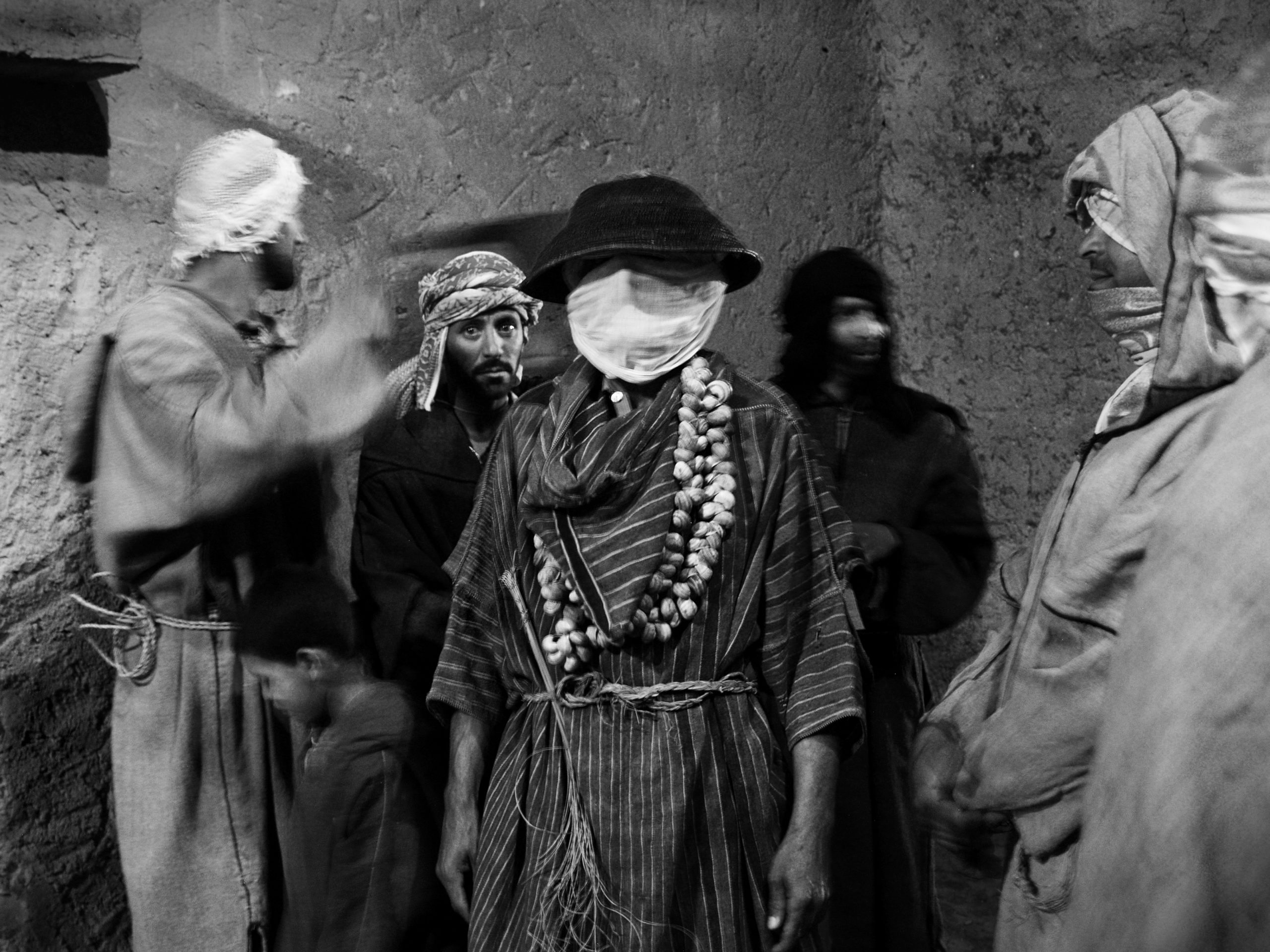
220 is the number of the hotel room where some of the founding members of the collective met while participating in a photography festival in Algiers. This name is a tribute to this improvised reunion and the connections that grew out of it. The desire to create this group was mainly due to the need to offer a space for exchange, reflection and common work in an environment that lacked these collective experiences in Algeria. Their approaches and visual languages vary, but they share the same desire to photograph their realities in a personal and subjective way, to tell their stories and to show different perspectives of what Algeria is today.
Collective220 is a photographic narrative anchored in diverse and scattered areas of the Algerian territory, which tells stories of people, cities and spaces. The collective aims to be a vast field of experimentation and learning for each member, with its various subjects, techniques and tools. In addition to being a kind of shared internal laboratory, 220 is a way of creating external links to encourage exchanges with photographers, artists and other groups from around the world.
Hostal Portbou (c. Cervera 20)
RE: al_l_ity
Exhibition from the “LandLimo” residence
Saturday 18, 10:40 – Opening
Saturday 18, 19:30 – Round table (La Congesta, Portbou)
Sunday 26, 10:40 – Guided visit

During a two-month residency, Àgata Skupniewicz worked on the concept of the border with her interdisciplinary and immersive artistic approach. The project combines documents and images from the social archives of Casa Planas on cultural heritage but also its own photographs on the natural heritage of the island as a natural border. The contemporary landscape arises in its dichotomy between inside and outside, between access and limit, addressing gray tones and liquid transitions. The project is based on her own journey, that of her body, in transit to Mallorca, objectifying the journey and the border (political and geographical).
Exhibition from the “LandLimo” artistic residence. A project promoted by Euroregion, Fotolimo and Casa Planas Center for Research and Contemporary Culture.
Train station wall (Portbou)
The bridge
Exhibition from the “Constellations” residence
Saturday 18, 11:00 – Opening
Saturday 25, 17:15 – Round table (La Congesta, Portbou)
Sunday 26, 11:00 – Opening
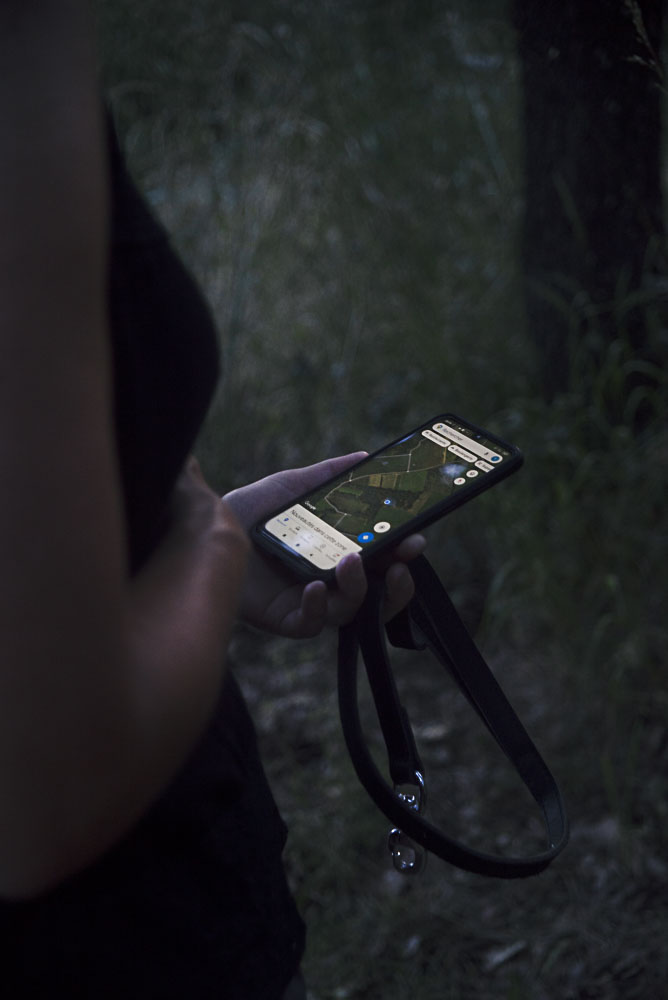
In Céret, a bridge, an object that connects, an object that divides.
The border is not the coastal river that must be crossed, the border is in the vision of our world and in the questioning of this zone at the edge of the city, this urban border that the project risks to make disappear. A zone at the edge, inhabited by a very varied population.
During my residence in Céret, I met the people of the “Bien Vivre” collective in Vallespir, who have been fighting for several years against the construction of a new bridge. Alongside them, I discovered the extent of the area impacted by this project, and the different individuals, all affected by the construction of the new bridge: farmers forced to sell the land that they have worked for 26 years, families forced to leave their homes, opponents to the urbanization of these lands. This photo project presents a few snapshots as a cross-section of these people, this territory and the stories behind it.
Train station wall (Portbou)
The slate island
Exhibition from the “Mémorial du Camp de Rivesaltes” residence
Saturday 18, 11:00 – Opening
Saturday 18, 20:00 – Round table (La Congesta, Portbou)
Sunday 26, 11:00 – Guided visit
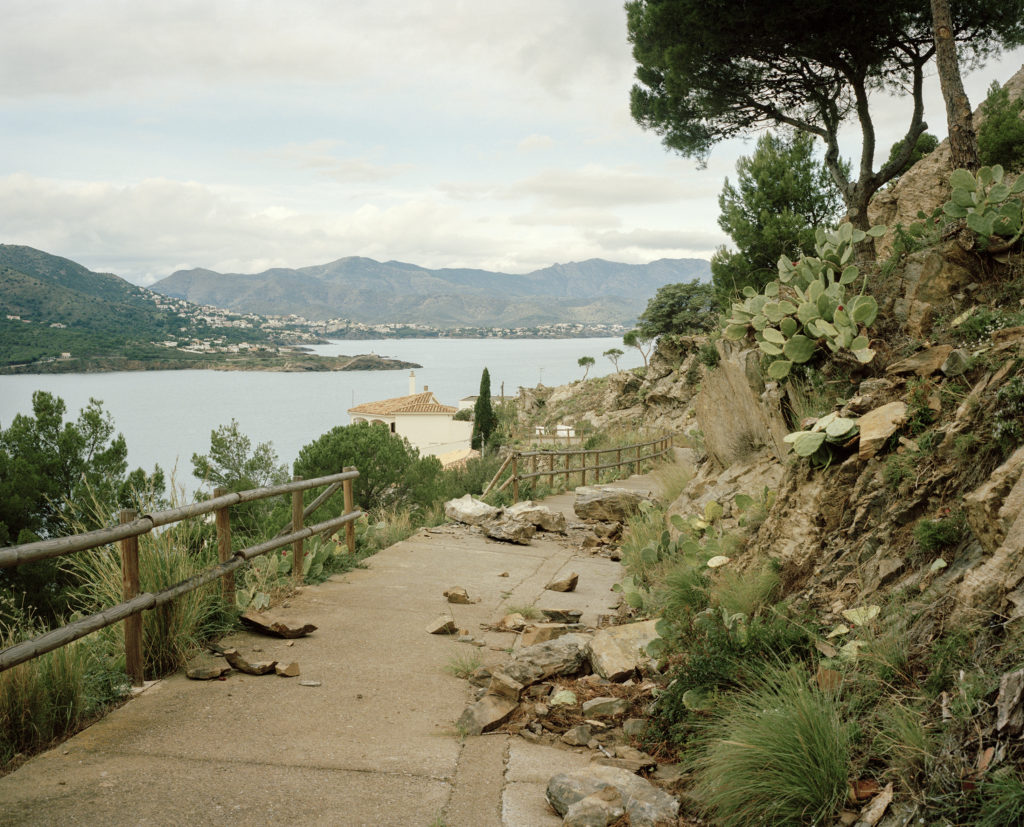
At the confines of the Pyrenees and the Mediterranean, the landscape is crisscrossed by paths and roads, dotted with villages and hamlets at each end of rivers that run dry for part of the year. Crossing the Albères massif, bumping into a blind wall here, a sharp rock there, the route takes unexpected paths and resigns itself to detours. Retracing its steps, contouring, forming dead ends where the exchange should take place. The shale massif takes the aspect of a golden island where the dark rocks are sculpted by the elements and the history of mankind.
The work presented is an excerpt of the project developed during the Fotolimo residency carried out in collaboration with the Memorial du Camp de Rivesaltes in 2019-2020.
Various places in Portbou
Border
Exhibition
Students and alumni of the photography school El Observatorio
Estefania Bedmar – Renata D’Angelo – Juan Nadie – Xavi Aragonés – Eva Barton – Mora Dorrego – Andrés Solla – Sara Sanz – Sira Esclasans – Daniela Pafundi – Pep Novellón – Sara Arruga – Alex Domènech – Naiquen Villanueva – Darío Ibáñez – Viscor Serri – David López – Xavier Sánchez – Amanda Bernal – David Momblan – Rocío Laffon
Saturday 18, 11:40 – Guided visit
Sunday 26, 11:40 – Guided visit

Works selected through the open call “Border”, open to students and alumni of the photography school El Observatorio of Barcelona. A selection of 30 photographs on the border issue approached from the broadest sense of the word.
Old customs post
Ignoscentia
Exhibition from the open call “Interior Borders”
Saturday 18, 12:30 – Opening
Saturday 18, 16:00 – Round table (La Congesta, Portbou)
Saturday 25, 12:00 – Guided visit
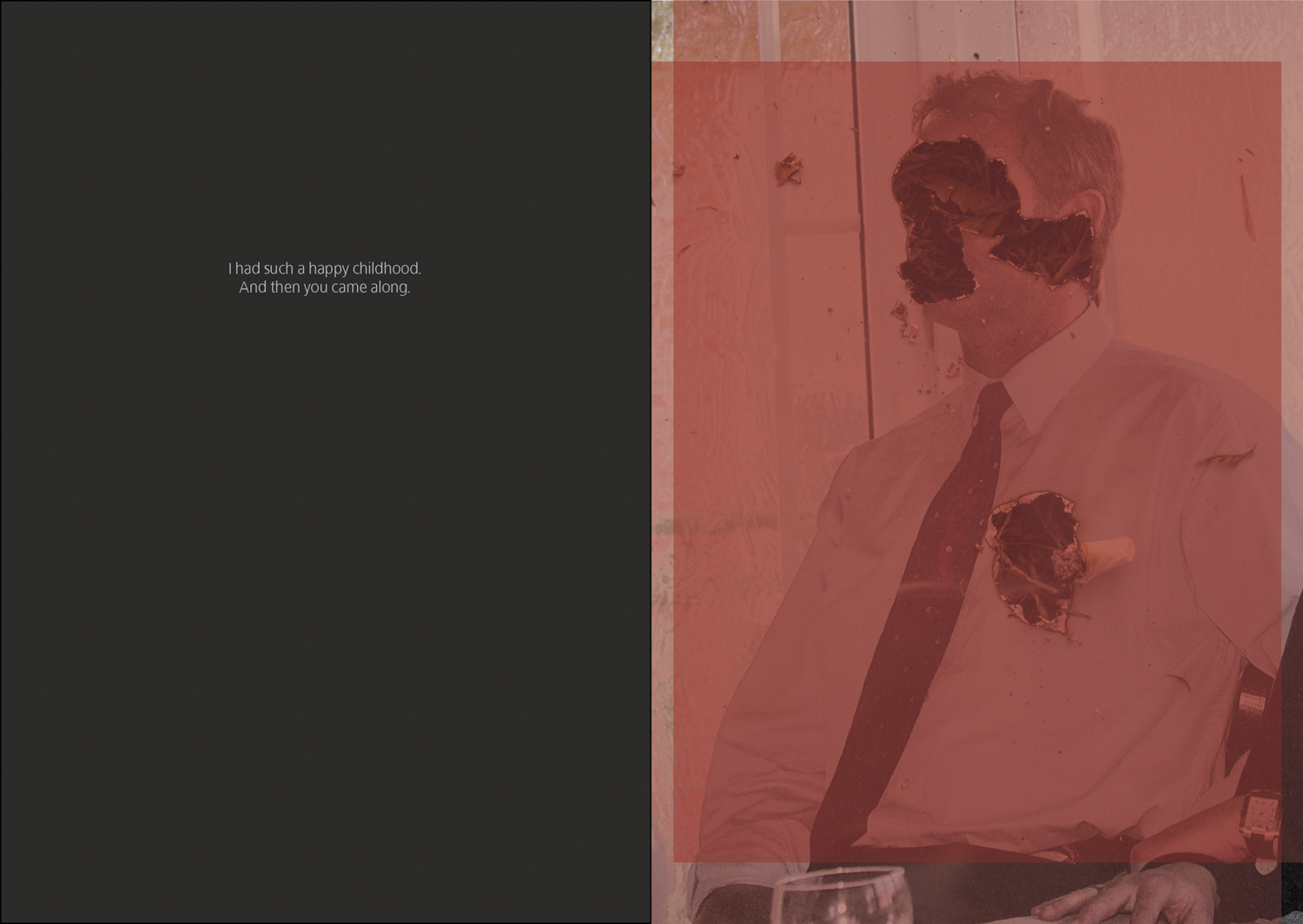
In Ignoscentia the artist describes and processes her own experiences with child sexual abuse. Radically subjective, yet globally applicable, she manages to open the subject to others by using subtle images that usually work as a metaphor and therefore leave space for one’s own interpretation. She combines different methods like photography, video, sound, writing, graphic design and multiple layers of material such as old family pictures, destroyed images, self-portraits and found objects.
It is a self-reflective revelation but also serves as an identifying ground, considering that statistics estimate that somewhere between every third and fifth woman will experience sexual abuse in her life.
Ignoscentia shows the viewer on different levels what sexual abuse can mean to someone’s life by tackling the vague emotions that are often difficult to express with words only. It furthermore aims to remind other survivors that they are not alone and can help them to reflect their own feelings.
Old customs post
Lifting exercises
Exhibition from the open call “Interior Borders”
Saturday 18, 12:30 – Opening
Saturday 25, 12:00 – Guided visit
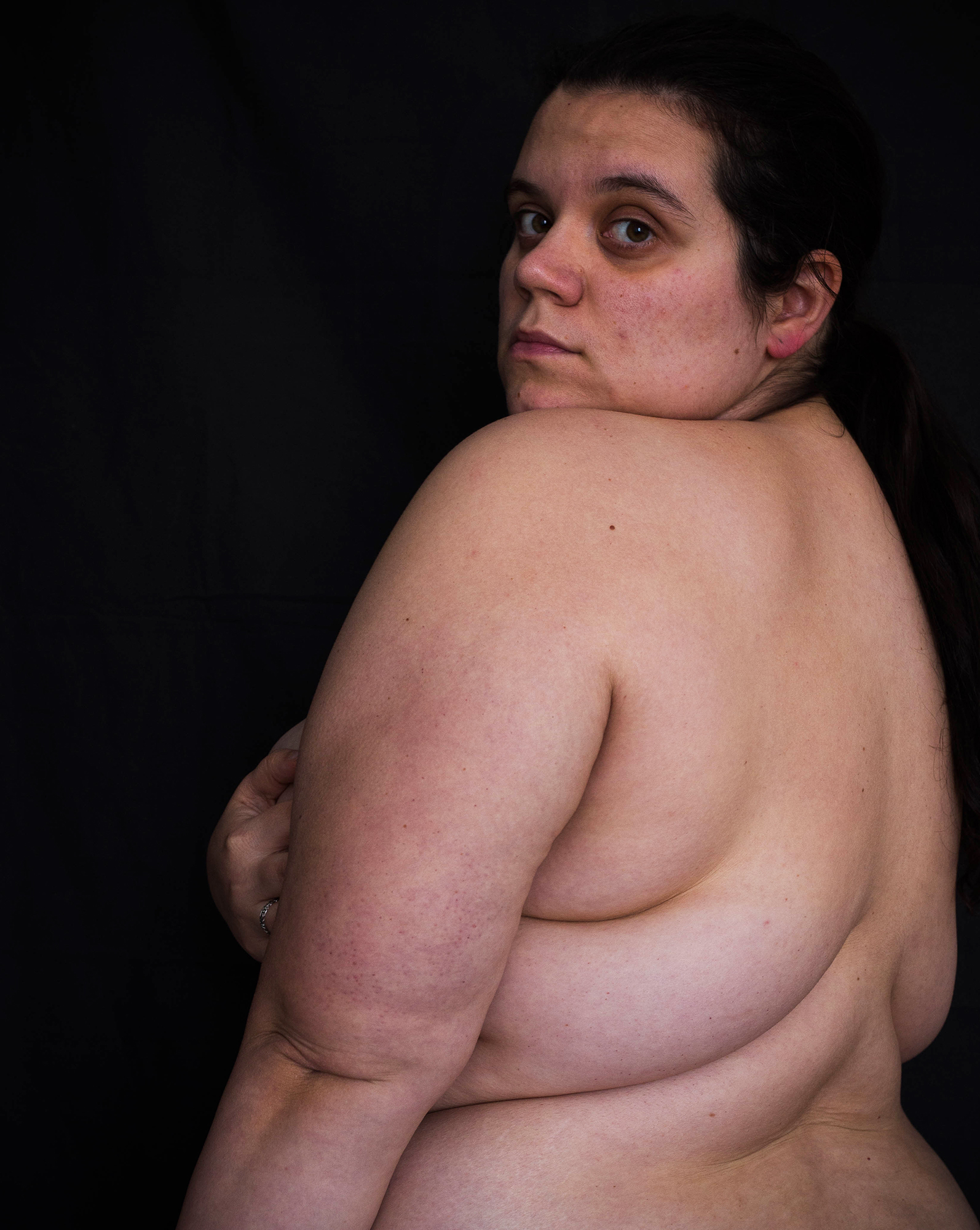
I am 32 years old. I look at my camera. My camera will be my instrument of analysis, my therapy.
I am going to photograph my body to force myself to look at it, to understand it. From now on it will not be a battlefield, but a fighting partner. I will photograph myself so that this process is recorded, so that other people see it and feel less alone.
My way of making myself visible, of claiming my place in the world after a lifetime spent trying to make myself smaller, in a society without space or representation for fat people.
Old customs post
Lilou
Exhibition from the open call “Interior Borders”
Saturday 18, 12:30 – Opening
Saturday 18, 16:00 – Round table (La Congesta, Portbou)
Saturday 25, 12:00 – Guided visit
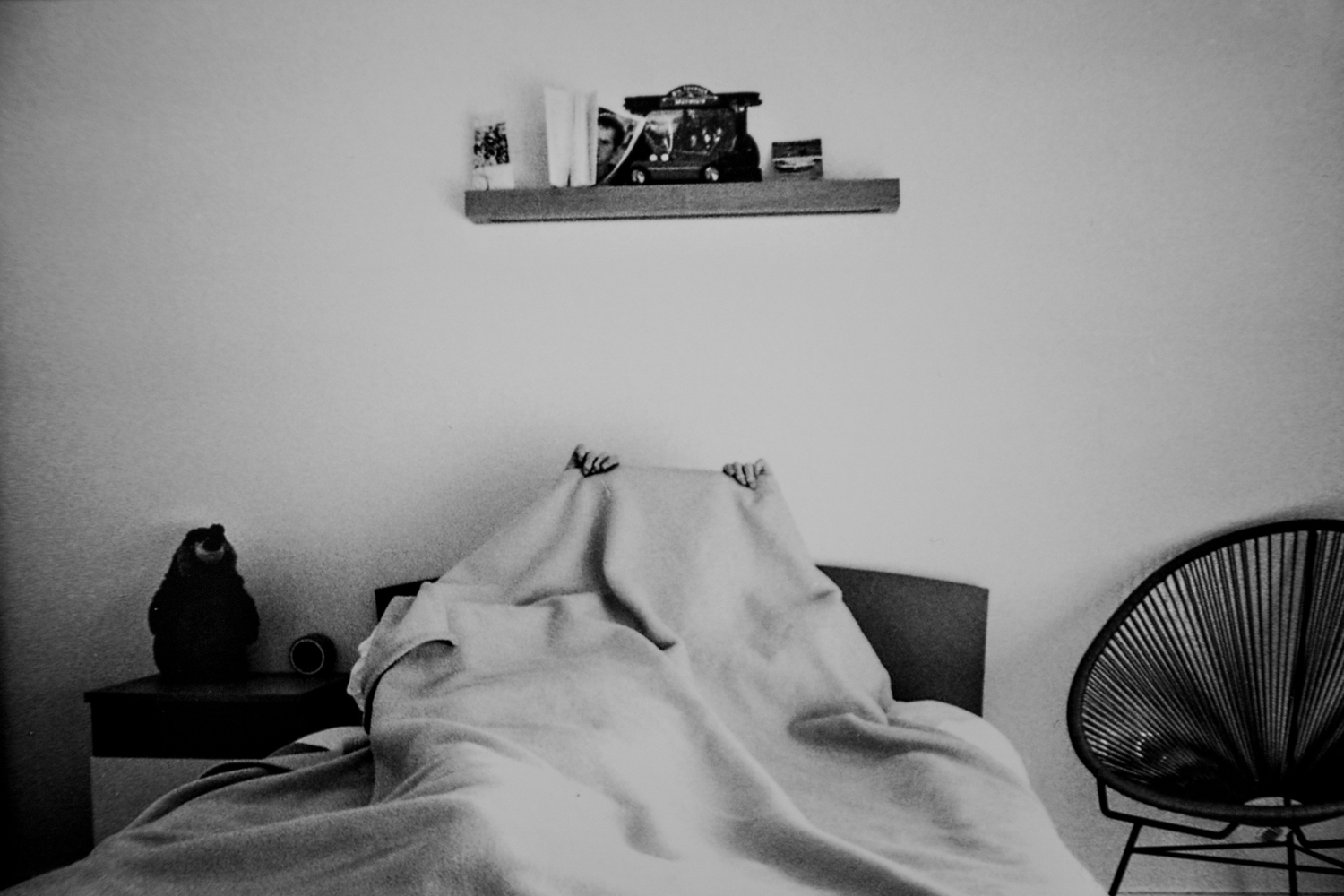
Lilou is the nickname given to my elder brother Antoine. As Luc Besson’s heroine in The Fifth Element, he is an exceptional person, living in a world different from others. In his own universe.
Antoine is a 32-year-old adult with severe autism who lives in a nursing home in Normandy, France.
Lucie Hodiesne Darras wants to highlight the daily life of her brother, of his world.
And through photography, to be the interpreter of his wordless language.
Old customs post
Bestiairy of females
Exhibition from the open call “Interior Borders”
Saturday 18, 12:30 – Opening
Saturday 18, 16:00 – Round table (La Congesta, Portbou)
Saturday 25, 12:00 – Guided visit
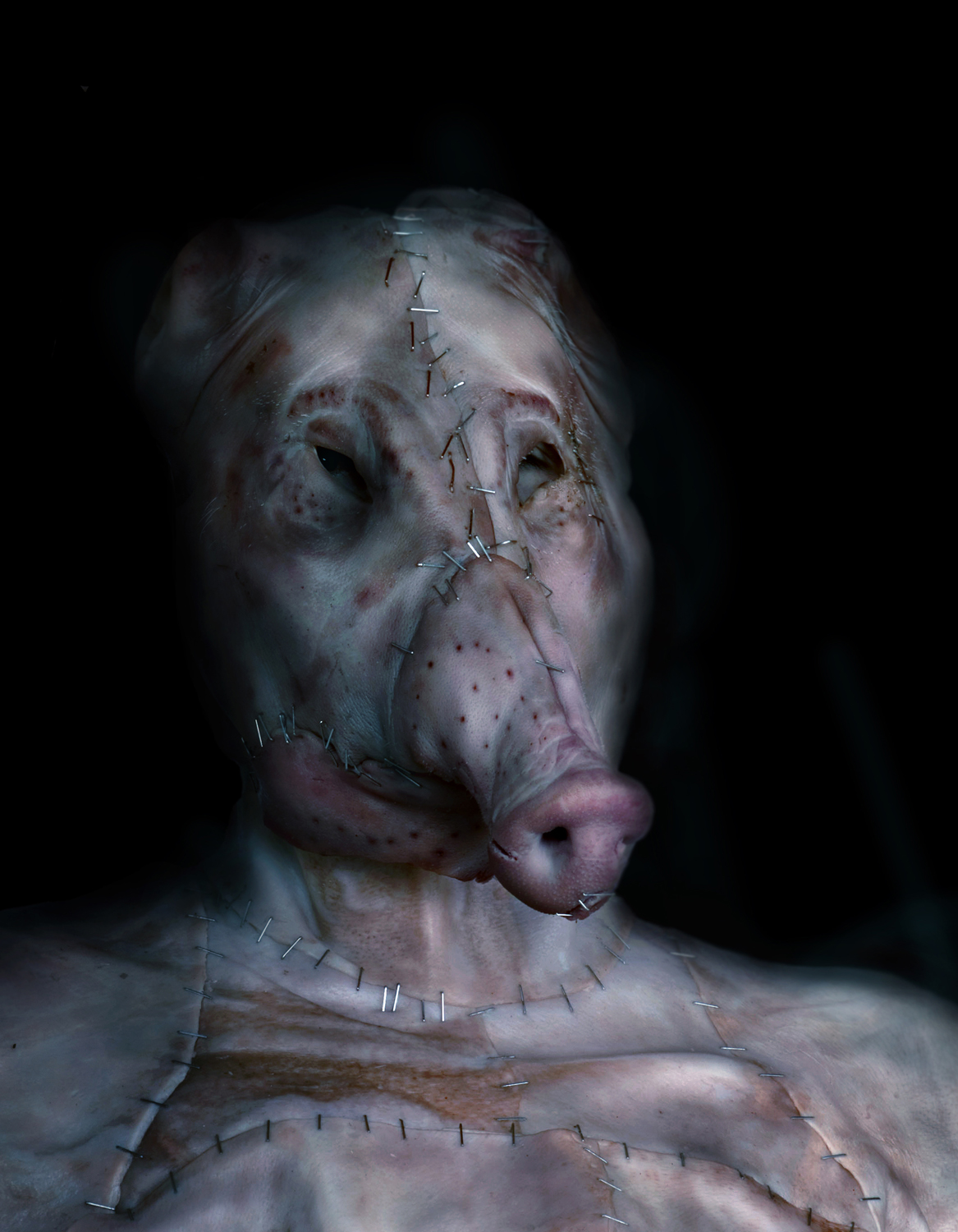
Bestiary of Females is a proposal of photographic self-portraits where the artist builds masks with organic matter, to give life to various creatures, verbalized from words that are used in everyday language to denigrate women and associate them to the animal world.
In a context in which debates about gender issues have been opened, there are still fissures that evidence violent ways in which women and nature have been conceived, specifically in the figure of animal epithets. In Western culture, women are often labeled with animal names to insult them and to emphasize ethically improper behavior or physical aspects that do not conform to the canon of beauty. For example, when they are called fox, dog, viper, sow, etc.
The materiality with which the masks are made are skins and entrails of animals such as chicken, pork or fish, elements that are not necessarily used for food consumption, thus constructing the work with the waste of the meat industry.
It is important to emphasize that no animal was harmed or mistreated in the realization of the project; on the contrary, they are a way of paying homage to discarded corporalities.
Old customs post
Miserere
Exhibition from the open call “Interior Borders”
Saturday 18, 12:30 – Opening
Saturday 18, 16:00 – Round table (La Congesta, Portbou)
Saturday 25, 12:00 – Guided visit
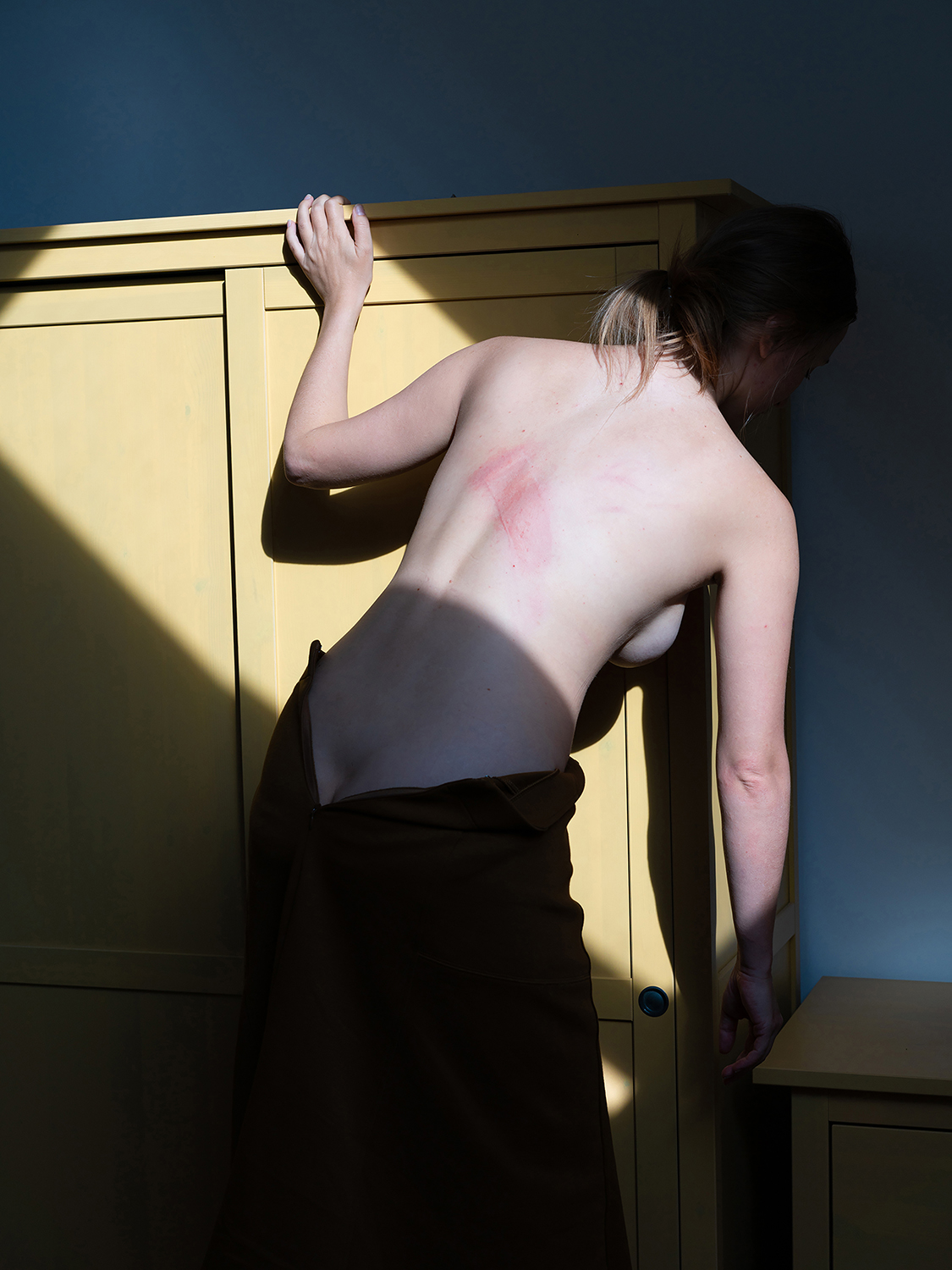
As a child, I had to read the psalm of David twice a day, morning and evening, according to the prayer rule.
Then I felt my personhood through pain: “…the subject (since Christianity) is the one who suffers. Where there is a wound, there is a subject” says Roland Barthes in “A Lover’s Discourse: Fragments”. Now I am reviewing my memories from new perspectives. But no new self-definition (atheist, feminist, spectator…) takes me out completely from the Christian paradigm, where agency derives from pain and trauma.
God, as a projection of my rejecting father, made me want to attract attention through sin. The very word “sin” has always had a sexual connotation for me. From the text of New Testament, I learned that God did not come to the righteous, but sinners, and this determined the strategy of my behavior for many years. Mary Magdalene became an example I would follow as a woman who lived outside of taboos. Sin was interpreted by me as rebellion, new sincerity, and the right to subjectivity.
In this project, I decided to recreate some significant events from my life through photography, to look at them from the outside, as does the God I don’t believe in.
Each frame corresponds to both a traumatic memory and a line from the psalm.
Old customs post
The forgoten of confinement
Exhibition
Saturday 18, 12:30 – Guided visit
Saturday 25, 12:00 – Guided visit
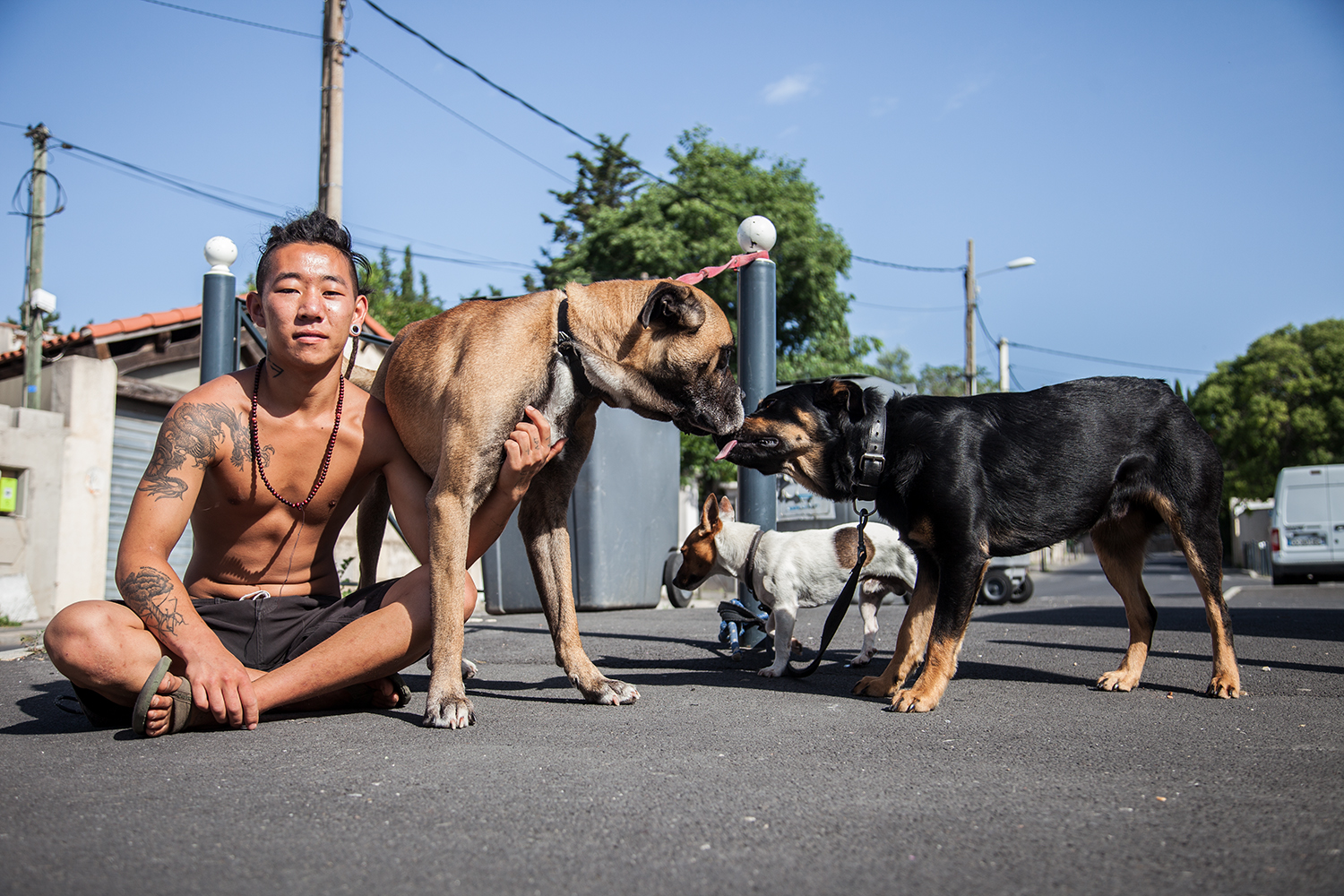
Sometimes it doesn’t take much to shake a mountain of hope, to destroy big dreams, to destroy what little faith we had left after hitting rock bottom. Sometimes it doesn’t take much for us to question our own humanity.
In an already deeply unequal France, where the words freedom, equality and fraternity, beyond their sonic beauty, are nothing more than vestiges of a deconstructed humanity, the Covid-19 has come to reveal the hypocrisy and bad faith of those who can help, but do not always do it the way they should, when it should be done and for whom it should be done.
Yes, they are there, in the streets. Almost everywhere. Visible or invisible, but not at all hidden. They are there because they are homeless. They live where they can, as in a parallel world, an “other world” with other codes: the world of the “homeless.” Surprised by Covid-19 and by the containment measures adopted by the French authorities, the unconfined homeless have seen their lives turn upside down, finding themselves, since the outbreak of the pandemic, in an uncomfortable situation that they could not foresee. Authorities say people must remain confined to their homes. But what do you do when there is no “home”? What do you do when you live on the street?
The streets have been emptied. Begging is impossible. They believe they have been forgotten in this health crisis. Abandoned to their fate in the deserted streets of the city, they animate some unsuspected spaces enabled as temporary shelters, while they wait… Until then, they are there. Fighting bad weather and police trying to evict them. But where can they go in these times of curfew, when the calm of the streets makes their silent presence more visible and revealing?
La Congesta Hall (Portbou)
Migrating and resisting
Book presentation
Saturday 18, 17:45
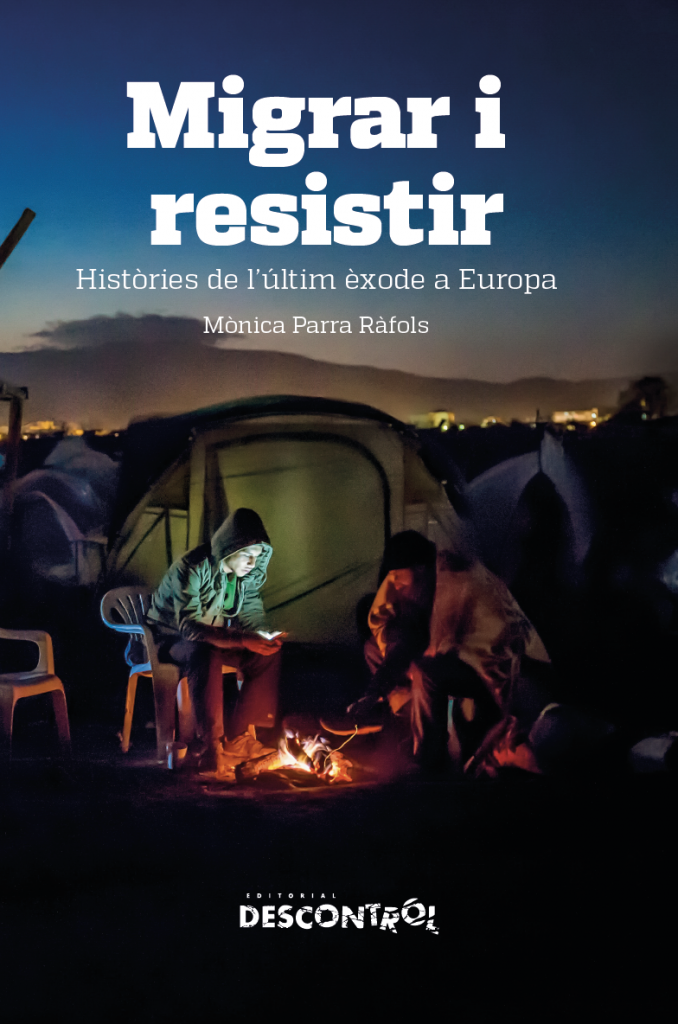
Migrating and Resisting is a vital and essential testimony, necessary to understand the reality of the humanitarian crisis that is taking place right now in our continent.
The book, written in the first person, narrates the experience of Mònica, a woman who begins by photographing, documenting and denouncing the situation suffered by those who arrive and that ends up volunteering in several refugee camps. For three years, the writer meets men and women who have done the impossible to start a new life, far from war, misery or oppression and who have encountered a cruel Europe that does not respect even the right to life. From the honest hand of the narrator, we see how independent volunteers and activists fight to humanize situations while politicians and a part of society look the other way.
A story of resilience and resistance, but, above all, of dignity and love for others.
Cerbère town hall
Don’t lose it
Exhibition from the “Constellations” residence
Sunday 19, 10:00 – Opening
Saturday 25, 11:00 – Opening
Saturday 25, 17:15 – Round table (La Congesta, Portbou)
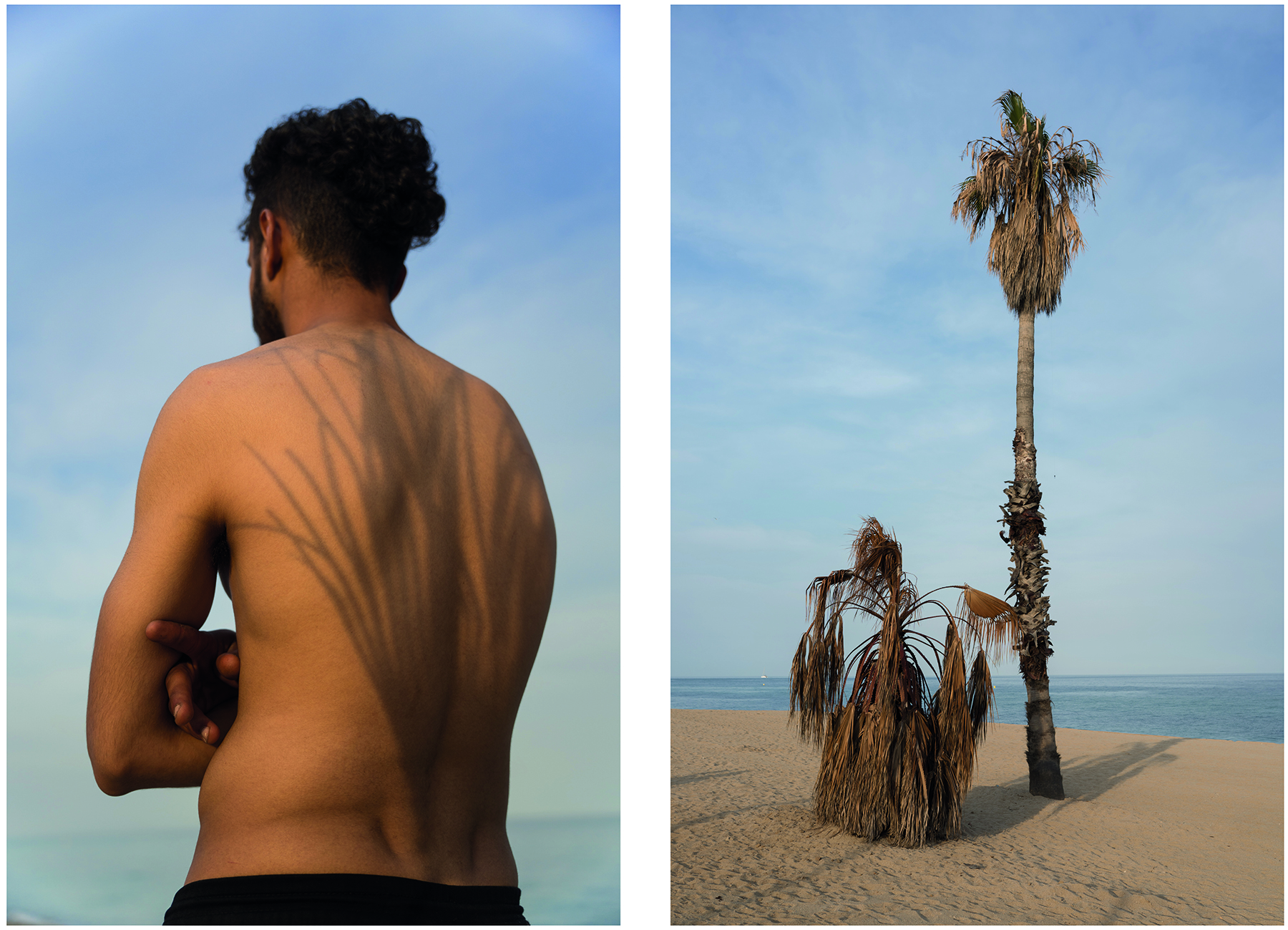
“Don’t lose it” are Bilal’s words and silences. It is a reflection on the migratory process of young migrants without adult references.
There is a rupture with certain cultural, social and symbolic elements, the constancy of pursuing dreams, the anguish, the frustration, the search for new zones of comfort and care. It is about approaching certain concepts that cross and question our subjectivity.
Belvédère Hotel (Cerbère)
The Backway
Exhibition from the “LandLimo” project
Sunday 19, 10:30 – Opening
Sunday 19, 12:00 – Round table
Saturday 25, 10:30 – Guided visit

The Backway is a transmedia project based on journalistic research and documentary images on the main migratory routes from Africa to Europe. Faced with the continuous images of migrants crossing —and shipwrecked— in the Mediterranean, our objective was to answer the question: What happens before reaching the Mediterranean Sea?
Since 2014, more than half a million people (648,433) have reached European shores by crossing the Central Mediterranean. This route, that passes through Libya, and that extends more than 7,000 kilometers and crosses the Sahara Desert, is also the deadliest in the world. 18,426 people have been shipwrecked trying to reach Europe since 2014. The International Organization for Migration estimates that almost twice as many disappeared in the desert – some 30,000 people – although there is no official data or anyone looking for the bodies under the sand.
But African migration is not numbers, routes or deaths. They are persons. Migration is the despair of a young man who cannot find a job, the uncertainty and unease of family members who remain at home. It is the hope that the loved one will return one day and the acceptance of the grandfather that he will never see his grandson again.
In The Backway, we have traveled to seven countries on the main West African route to Europe -Gambia, Senegal, Sierra Leone, Mali, Niger, Tunisia and Libyan territorial waters- to get closer to the people who are at the fore in this key 21st century phenomenon. Our aim was to understand the reasons and context that push people to migrate, as well as to give visibility to human rights violations and the real effects of the migration policies of the EU and its allies.
Old customs post
Balance and resistance – Bering Strait
Exhibition
Saturday 18, 10:00 – Opening
Saturday 25, 12:00 – Guided visit
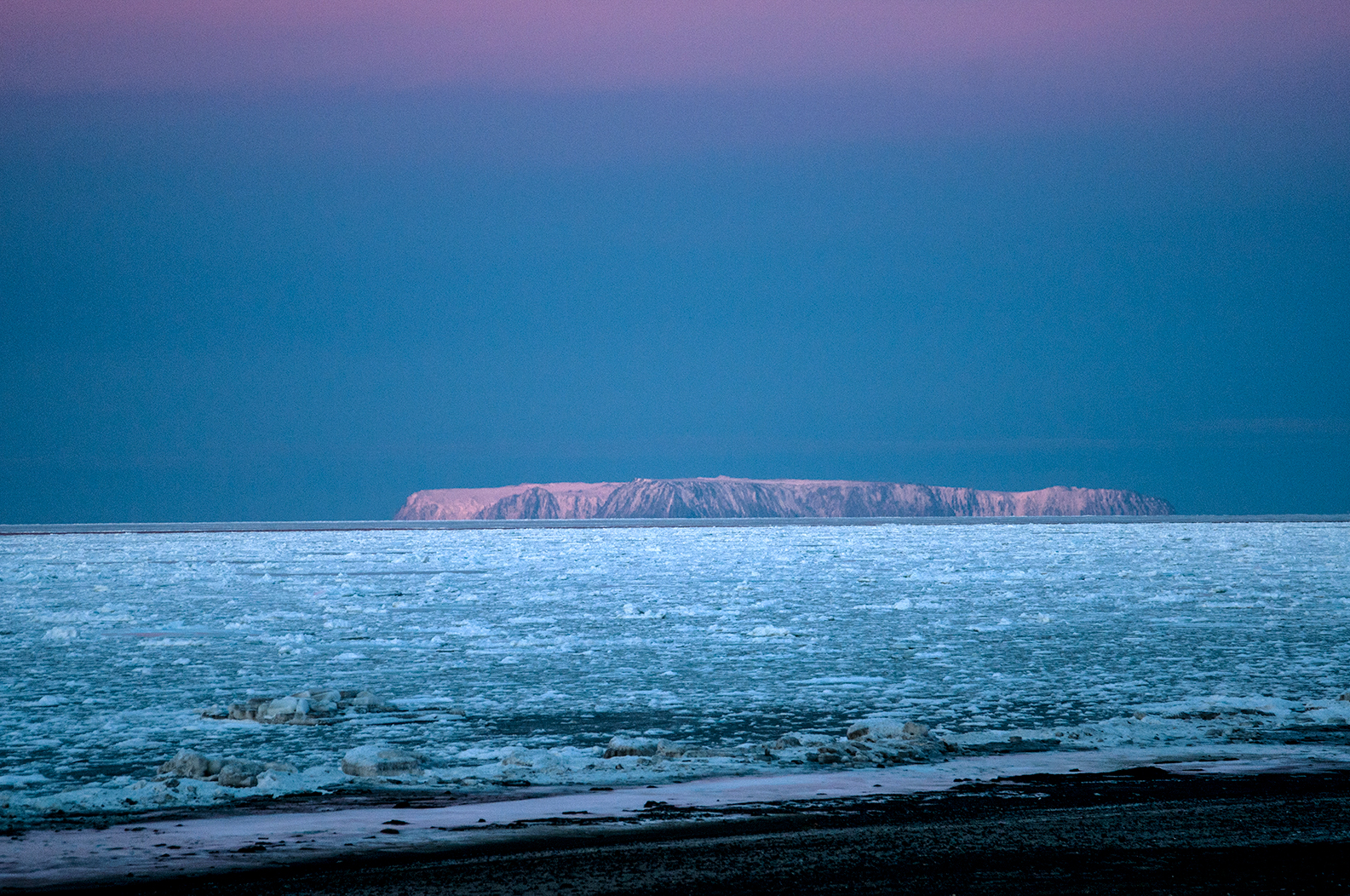
In front of a computer, distances are now redefined. Who is near and who is far away, when the feeling of belonging is defined by virtual spaces? The ability to transcend physical proximity through technological means forces us to constantly reflect on how awareness of our own place on the planet is currently being redesigned.
Identities are built across ethnic boundaries and national sovereignty. The ability to move both physically and virtually around the planet reminds us of how the nomadic spirit moved the first human groups in search of new spaces.
At the heart of a landscape dominated by cyberspace, the colonization of America through the massive migration of human groups from Asia seems to be the starting point of an ideological debate. However, not only is it possible today to have archaeological evidence that weakens this hypothesis, but it also forces us to deconstruct the conceptual limits of the idea of ”colonization”. Although “colonization” can refer exclusively to structures of political domination, it is also important to understand it as a dynamic of reformulation of social spaces through migration and the interaction of different human groups.
By writing this, we do not want to deny the violence that accompanied the imposition of political patterns of domination, but to evoke the spirit of the first nomadic groups to highlight how virtual space redefines the mobility of human beings towards the world at the present time.
Courtyard of the Hotel Central (Cerbère)
Popular lunch
Price: 7€
Sunday 19, 13:00

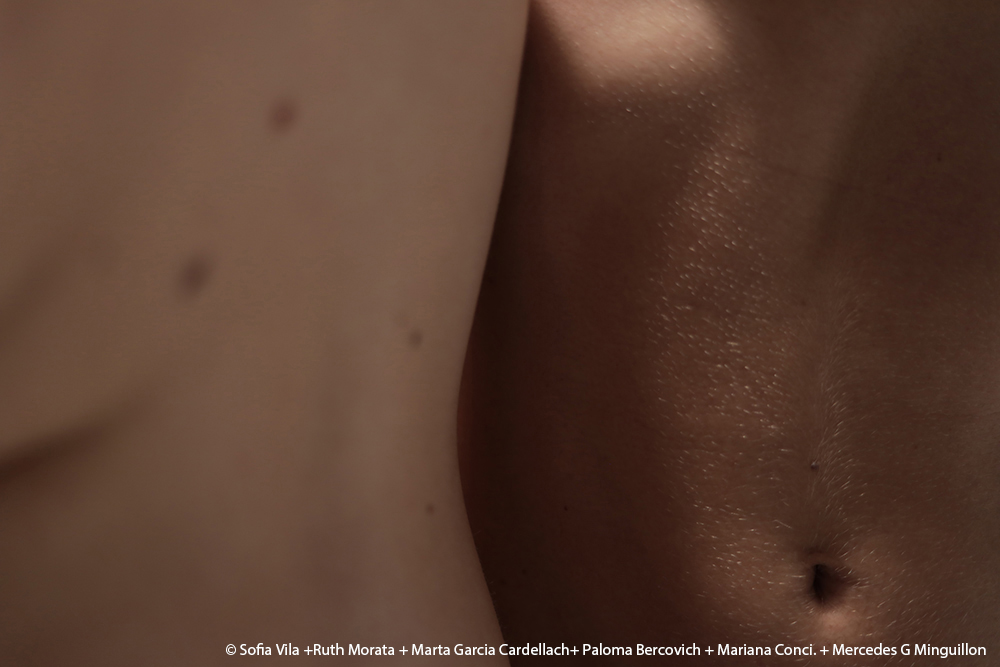
“Body Border” is a laboratory of experimentation in which we will develop a photographic series inspired by the expression of the body as a new field of visual creation. We will turn our gaze inward and immerse ourselves in the poetics of the image.
In the words of Wim Wenders: “Taking photographs is an act in two directions: forwards, it shoots the photograph and backwards it records a radiography of the photographer’s mind by looking directly through his eye into the depths of his soul”.
The goal will be to build a common space, where to imagine new possibilities and relationships with those traces of oneself and of an “us” and to translate them into images. The final result will be a collective creation where we will reflect on the experiences that emerged in the workshop.
No previous experience in photography or body work is necessary.
All bodies are welcome.
Materials needed: Comfortable clothes, compact/reflex camera and/or cell phone.
Ainhoa Valle: Freelance photographer and graduate in Communication, she is trained as a Gestalt therapist (Institut Gestalt – 2013) and in the postgraduate course of Integrative Bodywork (TCI – Luis Carbajal) among others. Specialized in facilitating participatory and therapeutic photography projects with different groups of migrants, minors or people with functional diversity, she regularly collaborates with institutions, associations and educational and participatory art projects.
Belvédère Hotel (Cerbère)
Portfolio reviews
Saturday 25, 15:00 – 18:00
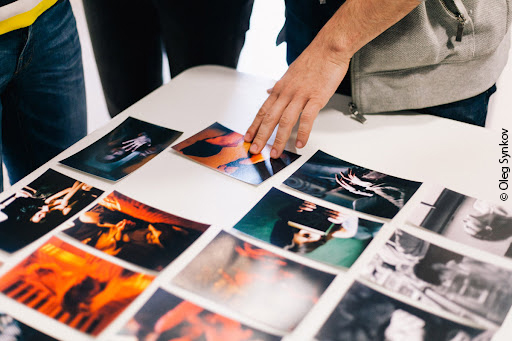
Do you have a photographic project in progress and would like an expert to review your work? Do you have a completed photographic project and would like to share it or get expert feedback? Participate in the portfolio reviews!
FotoLimo festival invites you to present your work to photography professionals, curators and directors of French art centers.
Walter Benjamin House (Portbou)
Digital photography, a neoliberal force
Conference and round table
In collaboration with the Walter Benjamin Summer School
Saturday 25, 18:30
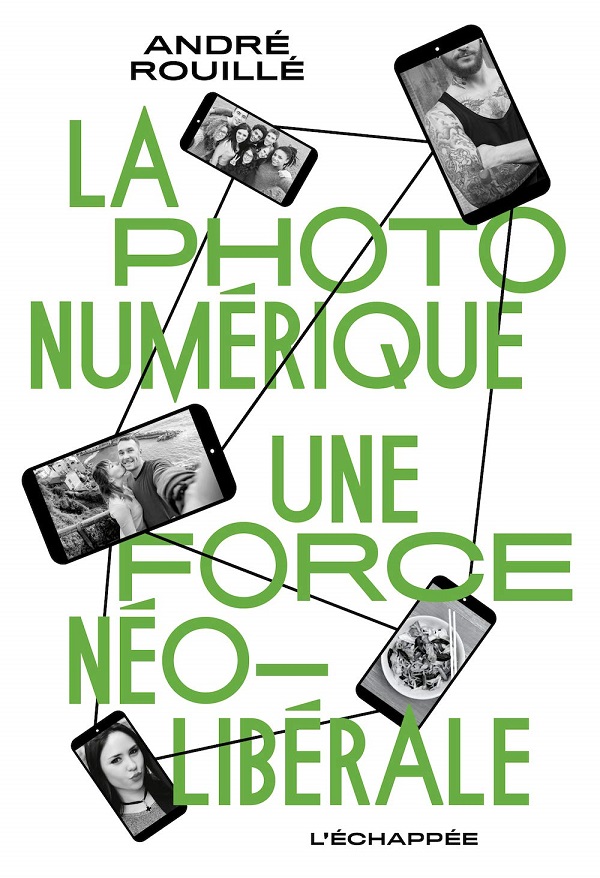
The use of digital photography by billions of people around the world is a social fact. These new uses, which fundamentally break with those of cinematographic photography, are part of the planetary development of neoliberalism that allows interconnection between people through new tools, smartphones and social networks. André Rouillé has built this book around the link between the development of digital photography and neoliberalism.
Cerbère station tunnel
Extract from the festival
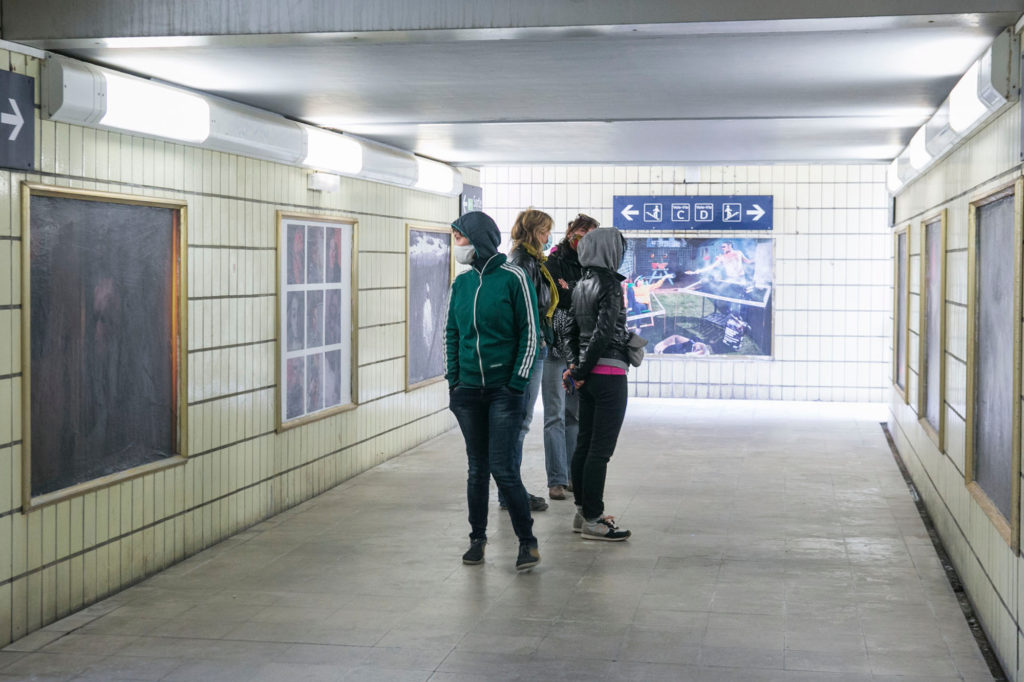
Schedule of activities
Friday 17
19:00 – 23:00 – Opening of the festival. Hôtel du Belvédère, Cerbère.
-
- Presentation.
- The island of the colorblind – Sanne de Wilde’s talk.
- Bering Strait – Projection by Lourdes Grobet.
- Cocktail.
Saturday 18
7:00 – 7:30 – Sowers of the future – Poetic performance by Jean-Pierre Hercout. Portbou graveyard.
10:00 – 12:00 – Openings route in Portbou
-
- The island of the colorblind – Sanne de Wilde. Rambla de Catalunya, 24.
- Crossed gazes – Collective 220. Rambla de Catalunya, 26.
- RE: al_l_ity – Agata Skupniewicz. Hostal Portbou, c. Cervera, 20.
- The bridge – Angèle Dumont. Train station wall.
- The slate island – Vivien Ayroles. Train station wall.
- Border – El Observatorio. Various places in Portbou.
12:00 – 14:00 – Openings in the old customs post
-
- Ignoscentia – Sina Niemeyer.
- Lifting exercises – Giulia Ferrari.
- Lilou – Lucie Hodiesne Darras.
- Bestiary of females – Gabriela Rivera Lucero.
- Miserere – Irina Shkoda.
- The forgoten of confinement – John Kalapo.
- Balance and resistance – Bering Strait – Lourdes Grobet. Hôtel du Belvédère.
15:30 – 16:00 – Sowers of the future – Poetic performance by Jean-Pierre Hercout. Portbou graveyard.
16:00 – 17:30 – Round table “Interior Borders”. La Congesta Hall, Portbou.
17:45 – 19:15 – Presentation of the book “Migrating and resisting” by Mònica Parra. La Congesta Hall, Portbou.
19:30 – 20:00 – Agata Skupniewicz’s talk. La Congesta Hall, Portbou.
20:00 – 20:30 – Vivien Ayroles’ talk. La Congesta Hall, Portbou.
Sunday 19
10:00 – 11:30 – Openings route in Cerbère
-
- Don’t lose it – Noa Morales & Sergi Conesa. Cerbère town hall.
- The Backway – RUIDO Photo. Hôtel du Belvédère.
11:30 – 12:00 – Sowers of the future – Poetic performance by Jean-Pierre Hercout. Hôtel du Belvédère, Cerbère.
12:00 – 13:00 – RUIDO Photo’s talk. Hôtel du Belvédère, Cerbère.
13:00 – 15:00 – Popular lunch. Courtyard of the Hôtel Central, Cerbère.
17:00 – 19:00 – “Body Border” workshop with Ainhoa Valle. Portbou beach.
Saturday 25
10:00 – 11:30 – Exhibition presentation route in Cerbère
-
- The Backway – RUIDO Photo. Hôtel du Belvédère.
- Don’t lose it – Noa Morales & Sergi Conesa. Cerbère town hall.
12:00 – 13:00 – Exhibition presentations in the old customs post
-
- Ignoscentia – Sina Niemeyer.
- Lifting exercises – Giulia Ferrari.
- Lilou – Lucie Hodiesne Darras.
- Bestiary of females – Gabriela Rivera Lucero.
- Miserere – Irina Shkoda.
- The forgoten of confinement – John Kalapo.
- Balance and resistance – Bering Strait – Lourdes Grobet. Hôtel du Belvédère.
15:00 – 18:00 – Portfolio reviews. Hôtel du Belvédère.
16:00 – 17:00 – Round table with Collective 220. La Congesta Hall, Portbou.
17:15 – 18:15 – Round table with the resident artists of the Constellations project: Angèle Dumont, Noa Morales and Sergi Conesa. La Congesta Hall, Portbou.
18:30 – 19:30 – Conference by André Rouillé “Digital photography, a neoliberal force”. Walter Benjamin House, Portbou.
Sunday 26
10:00 – 12:00 – Exhibition presentation route in Portbou
-
- The island of the colorblind – Sanne de Wilde. Rambla de Catalunya, 24.
- Crossed gazes – Collective 220. Rambla de Catalunya, 26.
- RE: al_l_ity – Agata Skupniewicz. Hostal Portbou, c. Cervera, 20.
- The bridge – Angèle Dumont. Train station wall.
- The slate island – Vivien Ayroles. Train station wall.
- Border – El Observatorio. Various places in Portbou.
12:00 – 14:00 – “Body Border” workshop with Ainhoa Valle. Portbou beach.
Exhibition in Barcelona
Gender, sex and transgression
La Lleialtat Santsenca (Barcelona)
9/9 – 9/10 2020
Curated by Patrice Loubon
Fabien Dupoux (France), Zaida Gonzalez Rios (Chile), Noncedo Gxekwa (South Africa), Yanahara Mauri (Cuba), Yomer Montejo Harrys (Cuba), Yuri Obregon Batard (Cuba), Alejandro Perez Alvarez (Cuba), Pauline Sauveur (France), Neus Solà (Catalonia) and Carla Yovane (Chile)

Art has always embraced sex and transgression with open arms, from rock art and phallic or vulvar inscriptions, to androgynous portraits by Leonardo da Vinci, or transgender erotic photographs by Pierre Molinier and the vivid intimacies of Larry Clark or Nan Goldin, gender, sexuality and transgression permeate art permanently.
What could be more obvious than the fact that photography is also the theater of atypical sexual representations and demands?
Gender, sex and transgression is not the first nor the last of the exhibitions that examine the question.
This exhibition brings together ten photographers who, each in their own way, come to tell us about their relationship with the body, gender and certain forms of sexuality that are largely tabooed.
It is not surprising that in this election four of them are Cuban. After having, for a long time, condemned practices that were described as “deviant”, this famous small Latin American country is today in fact at the forefront of sex change research.